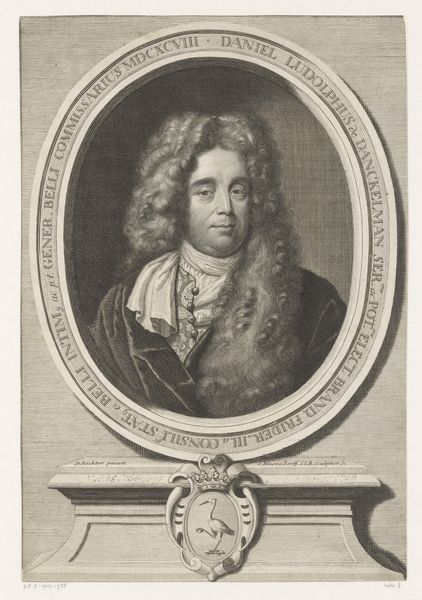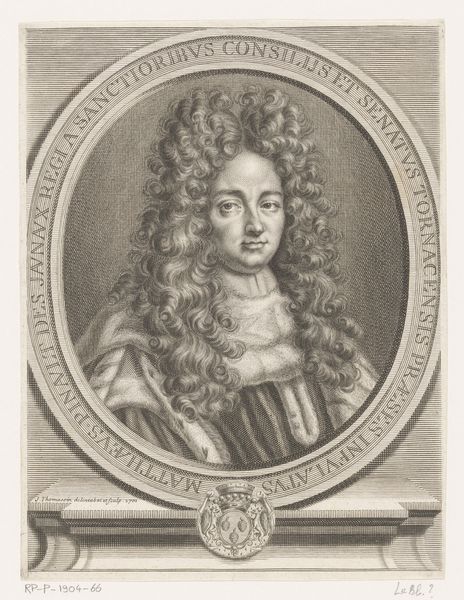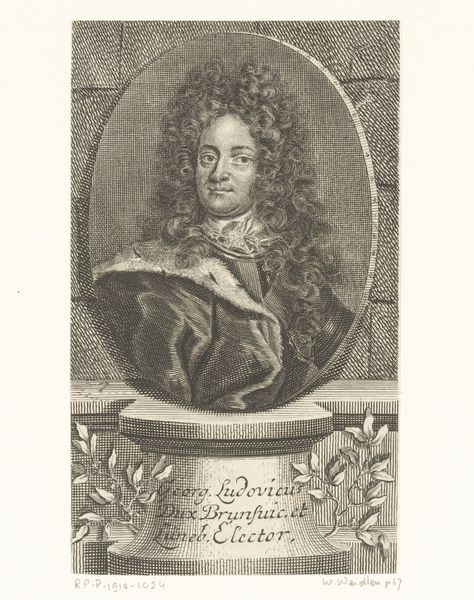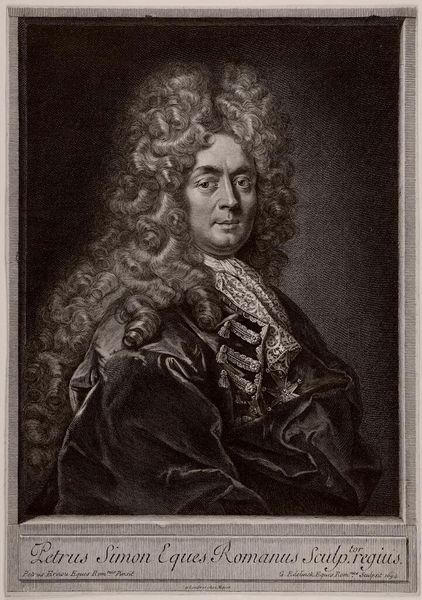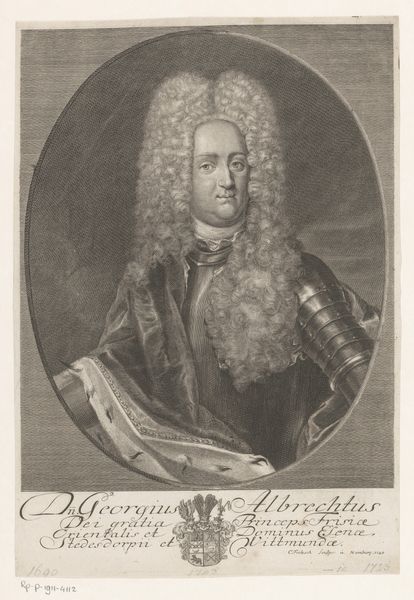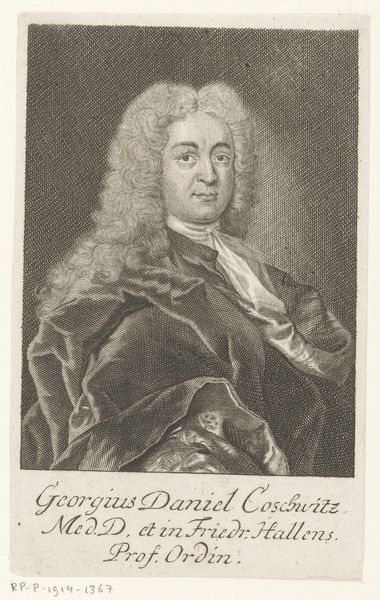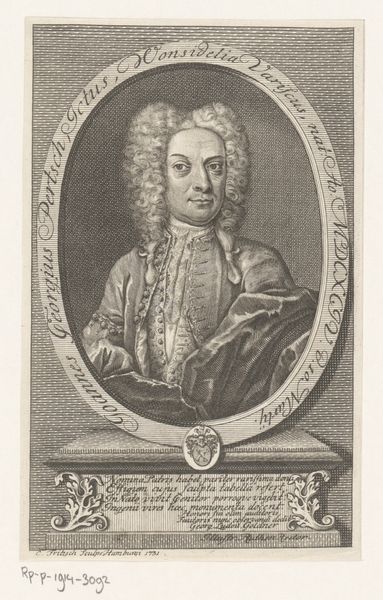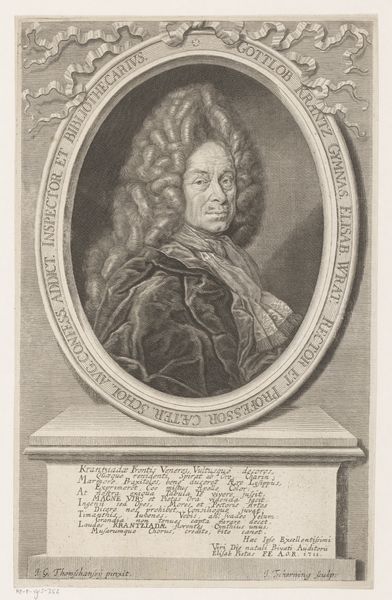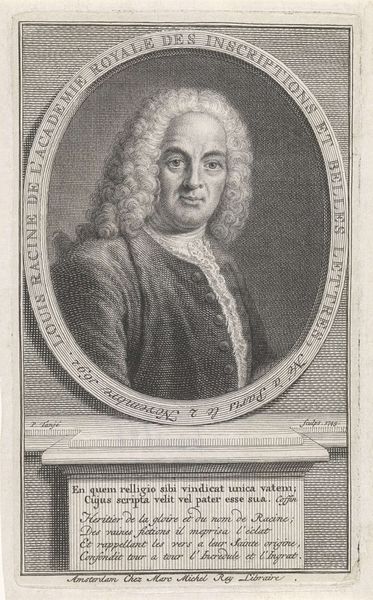
Dimensions: height 287 mm, width 189 mm
Copyright: Rijks Museum: Open Domain
Editor: Here we have "Portret van Johan Willem Friso, prins van Oranje-Nassau," a print, likely an engraving, dating from around 1856 to 1910. It's striking how much detail they were able to achieve, especially in the hair and the ornate border. How do you approach a work like this? Curator: The allure of this print lies in its meticulous orchestration of visual elements. Consider first the engraving technique. The crispness of the lines creates a visual texture, almost a palpable surface. The strategic deployment of hatching and cross-hatching gives volume and depth to the prince's face, imbuing it with a sense of life and presence. Note too the oval frame—its florid design serves not merely as a border, but as an integral part of the visual syntax. How do you feel it affects our perception of the prince? Editor: It feels like it's trying to ennoble him, but the frame itself almost distracts from the subject's face because it's so busy. It does seem intentional, though. Curator: Precisely. The interplay between the Prince's gaze, his posture, the armour and the frame generates a semiotic relationship. It invites a reading, encouraging a contemplation on status, representation, and perhaps even the nature of historical memory itself. Are you drawn to the visual weight in certain areas of the image, perhaps guiding your eye in a certain direction? Editor: I hadn’t thought of it that way. The contrast seems intentional, directing our attention toward the prince's face and torso before our eye moves up and down. Curator: The artist masterfully employs tonal modulations to underscore the play of light and shadow, structuring and directing our gaze and shaping our aesthetic experience of the subject and imbuing him with an almost palpable presence. These technical and compositional devices encourage us to understand the relationship among all the constituent formal parts. Editor: That’s fascinating! I initially just saw it as an old portrait, but now I see how every element contributes to a deliberate and powerful composition. Curator: Indeed, analyzing visual structures offers avenues for interpreting meaning and understanding aesthetic and theoretical contexts.
Comments
No comments
Be the first to comment and join the conversation on the ultimate creative platform.
